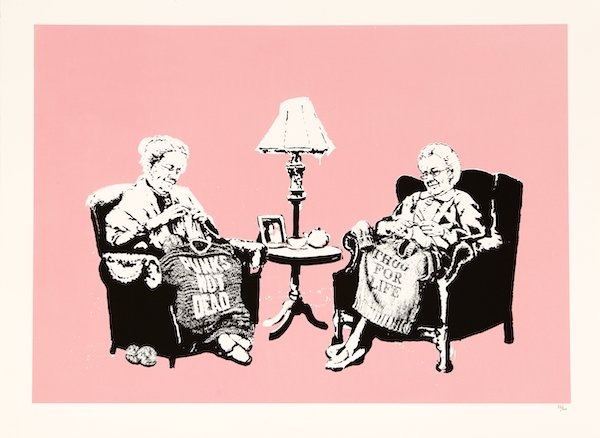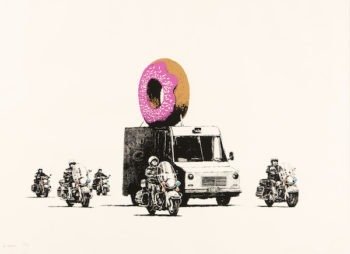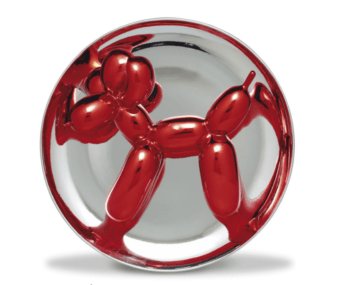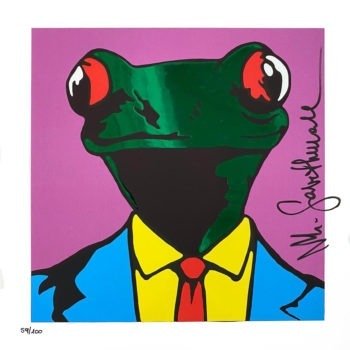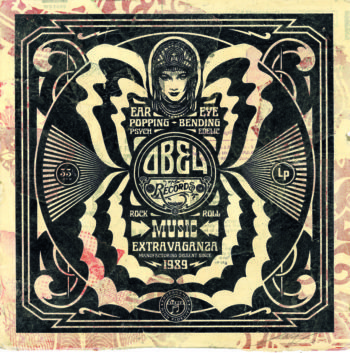Screenprint in limited edition of 600 works in all the world. The work is provided with the certificate of authenticity issued by Pest Control. 57x76cm
Unmistakable as well as mysterious, Banksy is nowadays the most famous and most valued living street artist in the world. But who is Banksy? His identity remains unknown, but there are several hypotheses about who the elusive Bristol writer is. The well-known French street artist Mr. Brainwash is one of the candidates, but also Robert del Naja (frontman of Massive Attack) and Robin Cunningham (another street artist from Bristol) have been considered.
Banksy’s works are sharp criticisms to the control and limitations to which we are subjected, in a clear shout that comes from the streets against the injustices, from war to pollution, to the capitalism and consumerism that dominate society.
Childhood and innocence are an escape route, a positive model to which the artist is often inspired: works such as the masterpiece by Banksy Girl with Balloon and Bomb Hugger are an example. While in Balloon Girl Banksy homages the lost innocence of childhood, in Bomb Hugger criticises war by showing the power of an embrace to stop the violence of a conflict. Similarly, the suggestive icon of Banksy Flower Thrower overturns the violence involved in the depicted act and, along with the flowers bouquet, sends a message of hope to all of us. And even stronger was the writer’s intervention in the Gaza Strip, in which Banksy made murals criticising the war in the delicate context of the Israeli-Palestinian conflict.
With Banksy, street art will change its rules and techniques: the stencil has become the emblem of the movement itself, but he also created installations and interventions that break every conventional artistic scheme. This happened, for example, for Dismaland, the “negative” amusement park that for a month in 2015 at Weston Super Mare in England exhibited the works by 58 artists criticizing the hypocrisy of the American capitalist model. Or the exhibition Barely Legal, held in Los Angeles in 2006 in which an Indian elephant stood in the centre of the room. Or the unauthorized stall set up by Banksy in Venice during the opening days of the Biennale, a criticism to the invasive tourism and pollution of the city.
Although until a few years ago he was a stranger to the art market, Banksy, artist who has now reached very high prices, represents an important reference point even in the controversial world of collectors and auction houses. In 2018, a Balloon Girl auctioned at Sotheby’s in London and it reached over $1.3 million, but thanks to a device installed in the frame it self-destroyed: a provocative critique against the commodification of art and the power of the market. The street artist’s current auction record comes from the work by Banksy Devolved Parliament, a satirical representation of the English parliament in which, instead of politicians, we find nothing less than monkeys. The work was sold by Sotheby’s in 2019 for more than $12 million.

